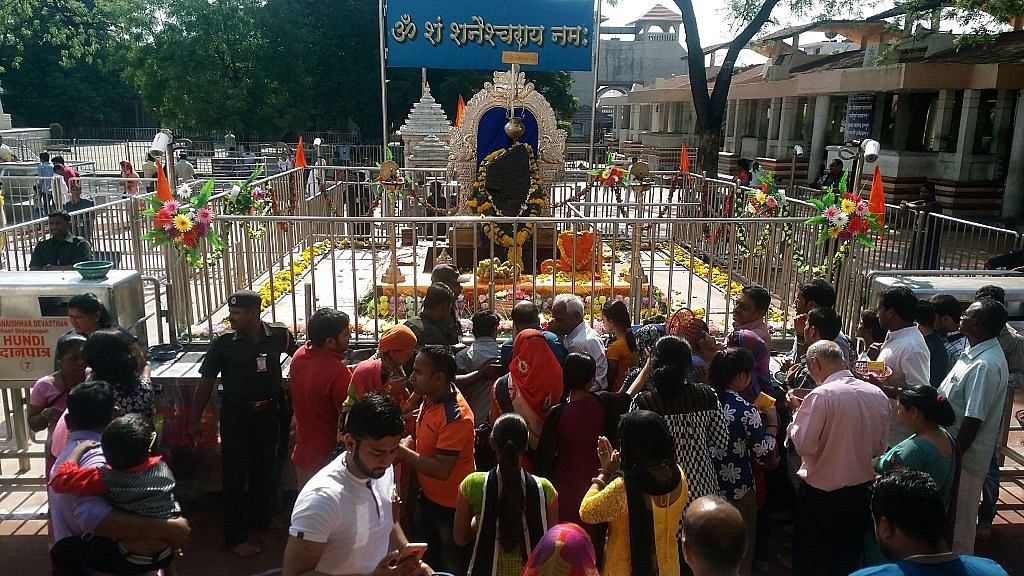Culture
Courts Seem To Be Taking Tough Stand On Hindu Issues
- Feminists can afford to be sanctimonious but not courts.
- Courts should refrain from interfering in the religious practices of one religion to the exclusion of others.

Shani Shingapur
The Bombay High Court has secured equality for women in the matter of worship at Shani Shingnapur temple, Maharashtra. In its wake, the Supreme Court is girding itself to tame the misogynistic tendencies of the Sabarimala Temple, Kerala.
Both feminists and courts are fulminating against all religions when it comes to misogynistic practices but swift and strict actions seem to be reserved for Hindu temples. This is bound to sow seeds of resentment on the part of Hindu religious and political outfits that could explode some day into a full blown civil and political crisis.
Feminists can afford to be sanctimonious but not courts. The rule of law must be applied even-handedly and till such time the skew in law in favour of a particular religion is removed, courts should refrain from interfering in the religious practices of one religion to the exclusion of others.
The US Congress showed remarkable courage and sagacity in banning bigamy, overcoming shrill and strident protests of the Mormon Church with its dominant presence in the state of Utah. Before ban Mormons were allowed to keep a gargantuan harem of up to 27 wives. Would we dare to take similar action in India? Would we dare to promote a uniform civil code that will be a constitutionally enforceable status from the present wishy-washy directive principles?
The Supreme Court says that the Constitution is all that matters but it may soon rue its words when religious minorities smugly cite the constitutional provisions on religious minorities. If our Parliament cannot summon such courage and judiciary can only sermonize in lofty verbiage, then the result is that only Hindu religion can be taken liberties with.
Misogyny practiced in Haji Ali was talked in the same breath with the misogyny practiced in Shani Shignapur when the issue was raging but the court chose to pass orders only against the Hindu shrine whereas it should have passed an order in the larger public interest. Of course there was a legal technicality—the situation at Haji Ali was not before the court.
In other words, the Bombay High Court was not seized of the misogyny practiced in Haji Ali. But the question is should courts take such a narrow approach in these kind of matters?
Even if courts straitjacket such issues having wider ramifications cutting across religions, shouldn’t legal precedent or stare decisis be invoked by the voluble group of feminists and civil activists?
The blunt truth is Islam enforces its religious edicts with a firm hand often described as fatwa. Even if a court explicitly ends the alleged misogyny in Haji Ali or indeed in any other so-called minority shrine or religious place, a fatwa would follow and the voice of sanity would be muted or stilled.
What is more, being by and large a monolithic religion, despite the Sunni-Shia divide, the religious edicts and strictures beget worshipful compliance and even women in whose favour the court might have spoken up would look askance at such a judgement. Indeed the moot question is whether the forces who organized the female movement against the invidious gender practice in Shani Shingnapur would dare to similarly organize a similar movement against minority religious practices.
The courts may not be hearing cross sections of Hindu females a large section of whom might as a matter of faith subscribe to the seemingly misogynistic practices. For example, the age-old bar on female entry into Sabarimala Temple recently found taunting and irreverent opposition with phrases like happy to bleed but what is not sufficiently publicized or brought to light is that many Keralite women have implicit faith in the ban. Faith and rationality do not go hand in hand.
Hinduism is loosely banded together and liberal with several sects and sub-sects. This has come as an alibi for not following the edicts of Shankaracharyas, Namboodhris and Vaishnavite seers. It is this disparity and looseness that has subjected Hinduism to being lectured at by all and sundry including the license to paint Goddess Saraswati in nude in the name of artistic freedom.
Support Swarajya's 50 Ground Reports Project & Sponsor A Story
Every general election Swarajya does a 50 ground reports project.
Aimed only at serious readers and those who appreciate the nuances of political undercurrents, the project provides a sense of India's electoral landscape. As you know, these reports are produced after considerable investment of travel, time and effort on the ground.
This time too we've kicked off the project in style and have covered over 30 constituencies already. If you're someone who appreciates such work and have enjoyed our coverage please consider sponsoring a ground report for just Rs 2999 to Rs 19,999 - it goes a long way in helping us produce more quality reportage.
You can also back this project by becoming a subscriber for as little as Rs 999 - so do click on this links and choose a plan that suits you and back us.
Click below to contribute.
Latest